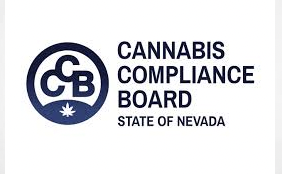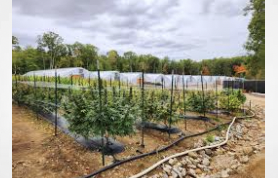August 22, 2024 By Danit Halberstein
Categories: Advertising

I. The Federal Ban: Cannabis and the USPTO
Currently, at the federal level, cannabis remains classified as a Schedule I substance under the Controlled Substances Act (CSA) – deemed a drug “with no currently accepted medical use and a high potential for abuse.” This classification puts cannabis in a tough spot. The United States Patent and Trademark Office (USPTO), which oversees the registration of trademarks at the federal level, typically refuses to register trademarks where the identified goods or services are federally unlawful. As a result, most cannabis goods remain ineligible for federal protection, even if the sale of cannabis is legal in the state where the trademark owner operates.
Hemp, on the other hand, was legalized under the 2018 Farm Bill. Defined as “the plant Cannabis sativa L. and any part of that plant…with a delta-9 tetrahydrocannabinol concentration of not more than 0.3 percent on a dry weight basis,” hemp is fair game for trademark registration, provided the hemp-derived products, including CBD, meet all other legal requirements for registration. For instance, this means that Farm Bill-compliant low-THC cannabis flower is federally legal and can be the subject of federal trademark registration. However, trademarks used in connection with edible products that would otherwise be legal under the Farm Bill may still not be registrable at the federal level if they contain added CBD because such products currently run afoul of the Federal Food, Drug & Cosmetic Act.
In May of this year, in a historic moment, the Department of Justice (DOJ) and the Drug Enforcement Agency (DEA) initiated a formal rulemaking process to consider reclassifying cannabis (technically, “marijuana” under the CSA) from a Schedule I to Schedule III drug. Cannabis has been classified as Schedule I since the CSA was enacted in 1970, and this rescheduling would recognize cannabis as having accepted medical uses and a lower potential for abuse compared to Schedule I drugs. This rescheduling would not, however, legalize recreational cannabis use. For recreational cannabis to become federally legal, cannabis would need to be de-scheduled (i.e., removed from the CSA entirely) or explicitly legalized by federal legislation.
Nevertheless, this reclassification could open the door to federal trademark registration for certain cannabis products and services. For example, cannabis brand owners that offer cannabis in compliance with Schedule III (i.e., cannabis for medical use) may very well be able to obtain federal registration of their trademarks for the cannabis itself – a monumental first.
However, a final determination on the rescheduling is not expected for several months. A GOP-led House of Representatives committee recently approved an amendment to a spending bill that would effectively block the DOJ’s efforts to reschedule marijuana. Therefore, cannabis businesses should not rely on federal policy changes any time soon as the sole means of protecting their brands.
II. State-Level Protections
Given the federal impasse, states have taken the baton and are – for better or worse – filling the void when it comes to formal protection for cannabis marks. In states where cannabis has been legalized to varying degrees, businesses can usually obtain state-level trademark registrations. These state-level registrations can help to bolster protection against infringement within the state.
However, it’s important to recognize that the power of a state-level trademark registration does not extend beyond that state’s borders. This means a cannabis brand owner with a trademark registration in one state will not be able to use that registration as an enforcement mechanism against a brand owner using a confusingly similar name in a different state or prevent that user from registering a similar mark in a different state, absent prior trademark rights in that other state.
Nevertheless, given the low cost of obtaining state-level trademark protection, cannabis brands would be remiss not to seek registration at the state level. Note, however, that the process and protections vary from state to state, so it’s essential to keep an eye on the specifics of each state’s laws. For instance, certain states require cannabis products with state-level trademark registrations to comply with distinct label and packaging requirements.
III. Alternate Strategies for Brand Protection
Crafting a trademark strategy for cannabis products requires creativity and a multi-faceted approach. In addition to state-level trademark registrations, here are some strategies trademark owners might consider for protecting your cannabis marks:
- Related Goods and Services: Trademark owners may seek federal protection for goods or services related to the cannabis industry. This might include accessories, educational, advocacy, and consumer products information services. Also, if a trademark owner offers a mix of products, with some being federally legal (i.e., smokable hemp or CBD products), it may apply for trademarks related to those goods while leveraging brand recognition across their full product line.
- Common Law Rights: Even without federal or state registration, trademark owners can accrue common law trademark rights through the actual use of a mark in commerce and bring common law trademark infringement and unfair competition claims to enforce these rights. However, these common law rights are generally limited to the geographic area where the mark is used, and absent a state registration, they may even be limited to a specific municipal area.
- Copyright Protection: A copyright protects original works of authorship, including literary, dramatic, musical, and artistic works. Because copyright involves creative expression, it is not restricted by the federal ban on marijuana. Cannabis companies can protect various creative works, including text and artwork on product labels and packaging, and the design of websites and software applications. Copyrights can be an effective weapon where the copyrighted works have been copied or adapted and are particularly helpful when dealing with online infringement, where web hosts and online marketplaces will often respond promptly to copyright complaints under the Digital Millennium Copyright Act.
The trademark registration landscape for cannabis products remains challenging but not entirely unnavigable. With careful planning, knowledge of federal and state laws, and strategic brand development, trademark owners can cultivate and protect their brands as the cannabis industry evolves.

















